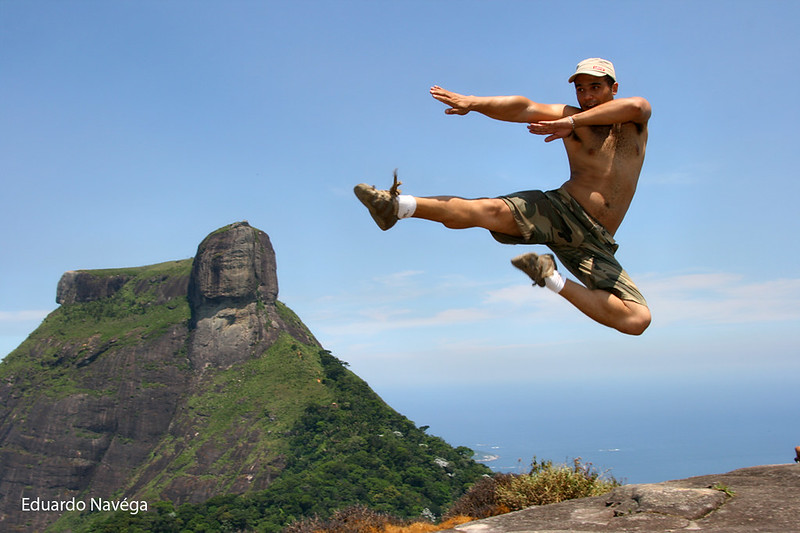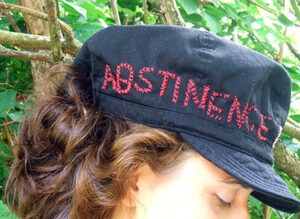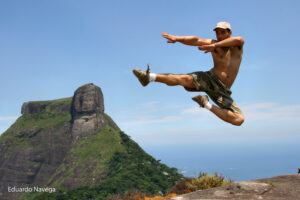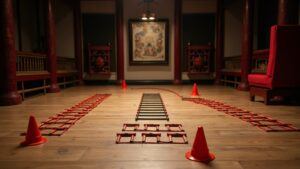
Kung Fu is one of the world’s most respected martial arts, admired not only for its philosophy and discipline but also for its explosive and graceful movements. Among its most striking features are the kicks—powerful, dynamic, and often dazzling. While Kung Fu shares some kicking techniques with other martial arts like Taekwondo or Karate, it brings its own flavor: kicks that combine practicality with artistry, combat application with performance.
If you’ve ever marveled at Jet Li’s speed, Donnie Yen’s precision, or Bruce Lee’s devastating efficiency, you’ve seen Kung Fu kicking at its finest. But which kicks stand out as the most effective, versatile, or iconic? This article breaks down the best Kung Fu kicks, their mechanics, applications, and why they remain timeless.
1. Front Kick (Cháng Jiǎo – 长脚)
The front kick is one of the most fundamental yet effective kicks in Kung Fu. Simple in design but lethal in practice, it’s often the first kick students learn.
Execution:
- From a fighting stance, lift the knee and thrust the ball of the foot forward.
- Aim for vulnerable targets: the groin, solar plexus, or chin.
- The power comes from the hip thrust combined with snapping the leg out.
Applications:
- Quick stop-kick to halt an advancing opponent.
- Effective at short-to-mid range, making it useful for both self-defense and sparring.
Why It’s Great: It’s easy to learn, quick to execute, and devastating when placed correctly. In street defense, a solid front kick to the midsection can end a confrontation immediately.
2. Side Kick (Cè Tī – 侧踢)
The side kick is arguably one of the most powerful kicks in Kung Fu, delivering force through the heel.
Execution:
- Chamber the knee by raising it high toward the chest.
- Extend the leg outward, striking with the heel.
- The body leans slightly back, and the supporting foot pivots outward to align the hips.
Applications:
- Knocks opponents back with sheer force.
- Excellent for keeping distance against aggressive fighters.
- In some Kung Fu styles, the side kick is used as a breaking technique against boards or weapons.
Why It’s Great: It combines defense and offense. The heel acts as a battering ram, delivering knockout power while protecting your centerline.
3. Roundhouse Kick (Huán Tī – 环踢)
One of the flashier kicks, the roundhouse has become a staple across many martial arts. Kung Fu’s variation emphasizes speed and precision.
Execution:
- Lift the knee to the side.
- Pivot on the supporting leg while snapping the shin or instep into the target.
- Targets include ribs, thighs, or even the head.
Applications:
- Disrupts balance by attacking the legs.
- Can be used for body shots to weaken opponents before moving in with hand strikes.
- High roundhouse kicks are often used in performance forms for flair.
Why It’s Great: The roundhouse kick’s versatility makes it a favorite. It can be quick and stinging or heavy and crushing. Few kicks are as adaptable.
4. Crescent Kick (Yuè Liàng Tī – 月亮踢)
Named after the arc it carves in the air, the crescent kick is both beautiful and functional.
Execution:
- Swing the leg in a circular path, either inward or outward.
- Strike with the inside or outside edge of the foot.
- Keep the body upright for balance and fluidity.
Applications:
- Used to knock weapons out of an opponent’s hand.
- Can target the head or shoulder with a whipping strike.
- Often incorporated into Kung Fu forms for grace and fluidity.
Why It’s Great: While less destructive than a side or front kick, the crescent kick is versatile and stylish, embodying Kung Fu’s blend of combat and art.
5. Axe Kick (Zhǎn Tī – 斩踢)
If you’ve ever seen a leg come down like a guillotine, you’ve witnessed the axe kick. It’s intimidating and surprisingly practical.
Execution:
- Raise the leg high, keeping it straight.
- Drop it forcefully downward, striking with the heel.
- Targets include the head, collarbone, or shoulder.
Applications:
- Can knock an opponent down if it connects cleanly.
- Used to break the guard of a defensive fighter.
- In traditional training, it doubles as a flexibility drill.
Why It’s Great: It brings raw, downward force. While slower than other kicks, it has the psychological advantage of dominance—few people expect a vertical stomp from above.
6. Butterfly Kick (Die Shuāng Fēi Jiǎo – 蝶双飞脚)
A hallmark of Wushu and performance Kung Fu, the butterfly kick is as breathtaking as it is difficult.
Execution:
- Swing the body horizontally while leaping into the air.
- The legs extend outward in a wide arc, parallel to the ground.
- Land smoothly after the spin.
Applications:
- Primarily used in demonstrations and competitions.
- Rarely used in combat, but it builds athleticism, balance, and confidence.
Why It’s Great: It showcases Kung Fu’s artistry. Though impractical in a fight, it symbolizes the acrobatic, flowing beauty of the martial art.
7. Tornado Kick (Xuán Fēng Jiǎo – 旋风脚)
Another acrobatic move, the tornado kick combines a spin with a jump, generating tremendous momentum.
Execution:
- Begin with a pivot, spinning the body while lifting the knee.
- Launch into a jump, extending the kicking leg in a sweeping arc.
- Strike with the instep or shin.
Applications:
- Effective in sparring when timed correctly.
- Often used in Wushu for its visual impact.
Why It’s Great: It blends power, speed, and surprise. The tornado kick embodies Kung Fu’s philosophy of combining practicality with flair.
8. Hook Kick (Gōu Tī – 钩踢)
The hook kick whips around to strike with the heel, often catching opponents off guard.
Execution:
- Raise the leg like a roundhouse.
- Instead of striking outward, whip the heel inward in a hooking motion.
- Strike the head, jaw, or shoulder.
Applications:
- Perfect for catching opponents who block straight kicks.
- Effective for striking around defenses.
Why It’s Great: It’s a surprise attack. The heel delivers a knockout-level strike, and its unusual angle makes it harder to defend against.
9. Double Kick (Shuāng Tī – 双踢)
Kung Fu loves to push the body’s limits, and the double kick is proof.
Execution:
- Jump into the air and deliver two kicks in one motion—often one kick upward and another downward.
- Requires excellent timing and leg strength.
Applications:
- More performance-based but can be used in combat to confuse or overwhelm an opponent.
- Builds explosive leg power.
Why It’s Great: It’s a showstopper. Few things draw applause like seeing someone kick twice before landing.
10. Sweep Kick (Tǎng Tuǐ – 躺腿)
While not as flashy, the sweep kick is one of the most practical.
Execution:
- Lower your body slightly and extend the leg in a wide arc across the floor.
- Aim at the opponent’s ankles or calves.
- Follow through to disrupt balance and drop the opponent.
Applications:
- Perfect for taking down larger opponents.
- Used in tournaments to score quick points.
Why It’s Great: It’s a reminder that Kung Fu isn’t just about high kicks—it’s about efficiency. A well-placed sweep can end a fight without throwing a single punch.
Choosing the Right Kick
Not all kicks are equal in every context. Here’s how to choose:
- For Self-Defense: Stick with practical, fast kicks like the front kick, side kick, or sweep.
- For Sparring: Add variety with roundhouse and hook kicks.
- For Performance: Unleash butterfly, tornado, and double kicks.
- For Conditioning: Use axe and crescent kicks to build flexibility and strength.
Training Tips
- Stretch Daily: High kicks demand hip flexibility and hamstring looseness.
- Start Low, Go High: Master kicks at waist height before attempting head-height strikes.
- Slow Practice: Work on control before adding speed or power.
- Condition the Legs: Strong quads, hamstrings, and calves make for explosive kicks.
- Breathe Properly: Exhale on impact to maximize force and stay relaxed.
Final Thoughts
Kung Fu kicks are more than just weapons—they’re a balance of function, form, and philosophy. Some are designed to end fights quickly, others to showcase artistry, and many bridge both worlds. Whether you’re a practitioner looking to sharpen your arsenal or an admirer of martial arts cinema, these kicks reveal the depth and versatility of Kung Fu.
From the simplicity of the front kick to the theatrical butterfly, the best Kung Fu kicks remind us of the art’s core truth: discipline and expression are not opposites—they’re two sides of the same strike.





